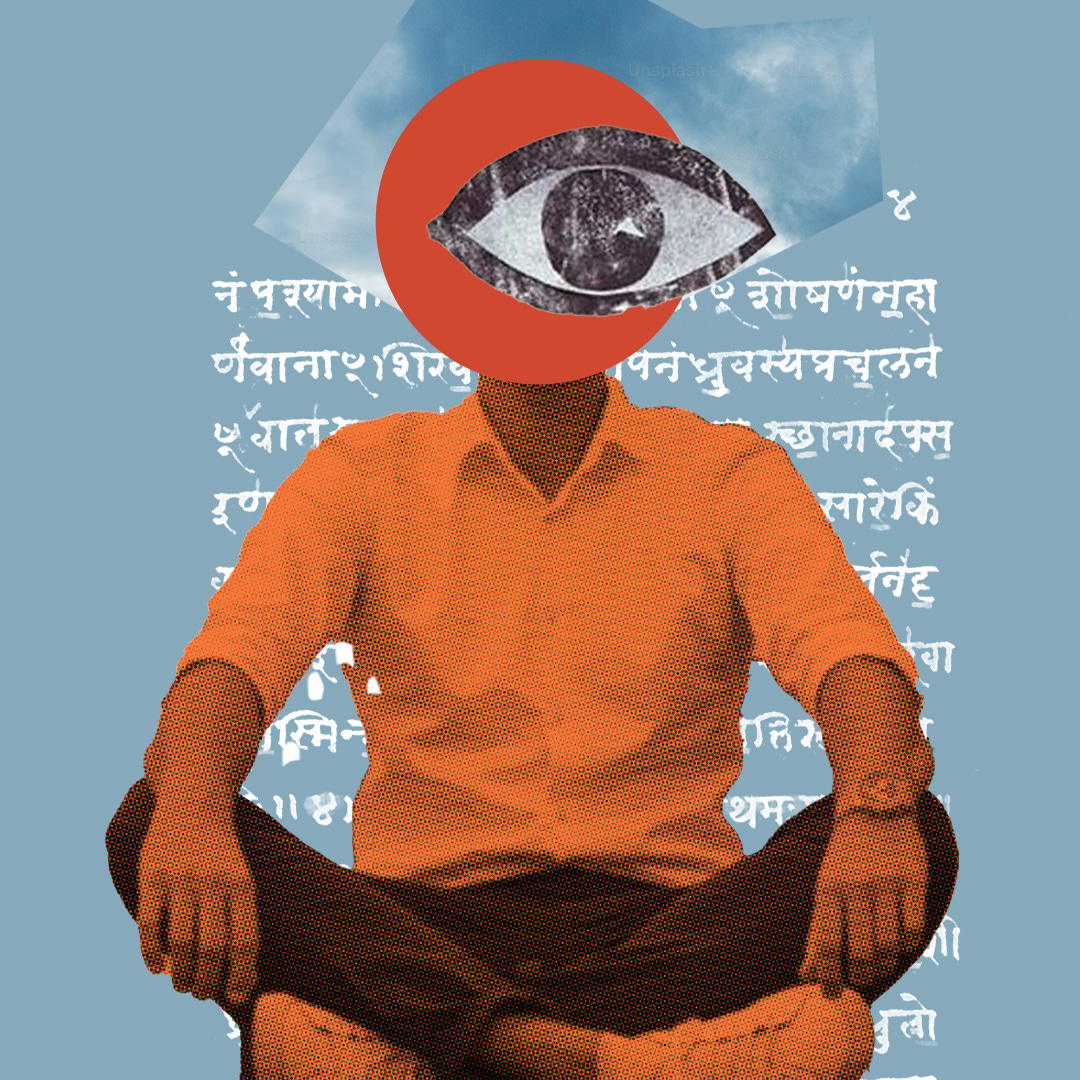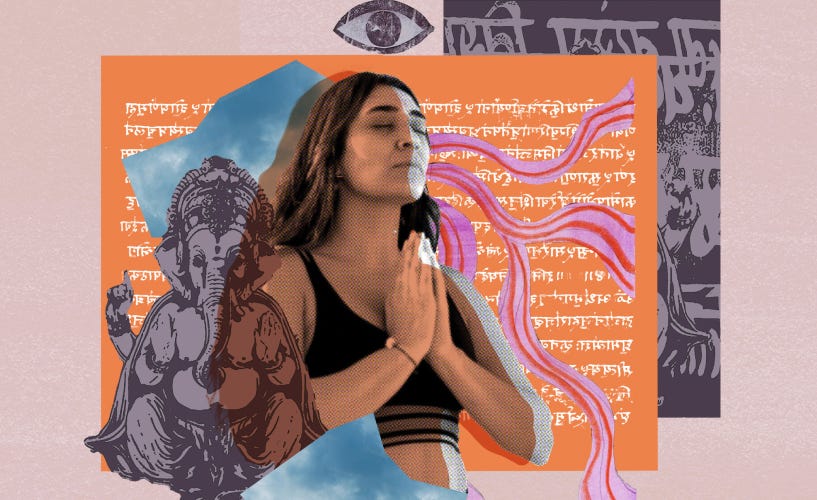Bringing into Being the Fruits of Practice
A Sort-of Manifesto for a School of Sādhana
NOTE: This was an email sent out to students of Embodied Philosophy’s Sādhana School. If you are interested in learning more about Sādhana School and perhaps joining nearly 100 students (as of this post), you can find more information here. Its never too late to enroll.
Dear Sādhaka,
The Sādhana School (SS) has been a dream in the making for a long time, and yet it was only through interactions with our students at Embodied Philosophy (EP) that we really started to focus on what we want Embodied Philosophy’s core mission moving forward to be about…
We want it to be about building a “kula” – a unique (albeit ancient) style of contemplative community that is bound not by doctrine or ideology but by a shared commitment to practice and study. This contrasts somewhat with the still-existing expression of EP as a kind of media site and course archive. While this archive is still quite valuable, it has somewhat lacked a facilitative component that many of our students have said would be helpful if not necessary to help them develop their contemplative knowledge and practice. After all, when there’s an ocean of options and no one pointing in a specific direction, we are as if thrust into the ocean without a raft on which to travel.
We want it to be about progressively and sequentially moving through the many traditions, philosophies, practices and perspectives of yoga “broadly conceived” – in many cases by anchoring our process in the study of new translations of sacred yogic texts (in addition to the many that are already-published). In the first year of SS, we’re pursuing this adventure through three 8-week sādhanas and a virtual 7-day retreat. But as those of who attended the Yoga Canon seminar (free on YouTube) discovered, to even begin to scratch the surface of complexity and nuance will take many years, and it is our hope that SS will continue to be a place where that study continues to unfold for a growing community of deep practitioners devoted to the discovery of knowledge and wisdom.
We want it to be where you can access a scaffolding of knowledge by means of which you are able to more easily organize and make sense of your own spiritual intuitions and experiences. As I’ve heard time and time again from students, “I have felt or experienced this thing you’re talking about, and now I have a word for it!” Words can be limiting, but they can also be empowering. And to discover the various vocabularies and languages of the yoga tradition is indeed an incredibly rich and transformative process.
And of course it wouldn’t be “Sādhana School” if it wasn’t about sādhana. Sādhana is like many fascinating Sanskrit words. The various meanings of it, taken together, offer us a way of describing what it is we’re doing when we practice in alignment with the spiritual technologies of yoga – those that help us to embody its principles and perspectives in our daily lives.
According to Apte’s Sanskrit dictionary, sādhana at once means “accomplishing” or “effecting”, which isn’t hard to wrap our heads around, since we easily recognize that the practice and study of yoga “accomplishes” something for us, and creates “effects” in our lives that many who practice this way become profoundly grateful for.
In the same dictionary, sādhana also means “conjuring up”, as in conjuring a spirit. We can think of this in two ways. At one level, when we engage in sādhana, we are conjuring up that aspect of ourselves that has become hidden and occluded by the distorted opinions, contracted forms of knowledge, and other forms of ignorance that bind our souls to limited expressions of life. These forces constrain our prāṇa (our life force) and enforce on us a vision of ourselves as a self-enclosed, autonomous and limited individual separate from everything else. Through sādhana, we conjure up our own spirit, and as that spirit becomes increasingly central to our identity, we discover many small and not so small shifts take place in our lives.
The second way we can think about this “conjuring up” will be familiar to those of you who took the recent sādhana on the Matsyendrasaṁhitā. There we learned that in the Śākta tradition especially, the practice of bhāvanā is one in which we bring into being – we “manifest” – a deity. This deity is not some Judeo-Christian “big God” that rules judgmentally like a monarch over all of existence. This deity is instead an aspect of our essential nature that we are calling into being. At least this is the non-dual Tantrik view that is central principle of our investigations with regards to this particular meaning of sādhana.
Lastly, Apte also offers us the translation of sādhana as “performing”. This to me is incredibly fascinating, and I’m still pondering its significance and what its implications might be for us. In our modern industrial cultural context, “performing” is simplistically conceived as a kind of entertainment. It doesn’t necessarily have, in most instances, any sort of perceived spiritual value. But when we turn to rasa theory and aesthetics later in the first year of our curriculum, we will begin to get a glimpse of the ontological significance of performance, and the corresponding ways in which the arts are uniquely central to the yogic path. Perhaps performance is categorized as “entertainment” in our culture because we have lost a deeper philosophical understanding of the purposes of the imagination, and the role that theatre, music, poetry, and others play in creating the conditions for the emergence of a fundamentally extra-ordinary sort of experience.
When we engage in sādhana, we begin to perform our lives in ways that continuously remember and reflect this process of integrating knowledge and experience. This kind of “performance” isn’t some kind of ostentatiously contrived persona that we develop to communicate to lowly non-spiritual underlings just how far we’ve come – and how much better than them we are spiritually. In fact, those who do adopt spirituality in this way, as a surface-level virtue-signaling about what someone’s perceived spiritual achievements are, those are, in my view, individuals who are actually signaling a shallowness of sādhana. As the New Age California types like to say, they haven’t “done the work”.
The integrated process of knowledge and practice that we’re engaging in Sādhana School is one that softens us, it humbles us (in a healthy way), it refines our understanding, it deepens the orbit of our perception, and it ultimately cultivates a radical flexibility of mind and heart that has the potential to serve every department of life, every occupation, and every relationship.
When we are authentically coming from that subtle space produced through the performance of sādhana, we may still have some of our prejudices towards stupidity or small-mindedness. We’ll probably still get pissed off sometimes and get in reactive, unhelpful spats with our loved ones. We’ll still make many, many mistakes. But alongside the lingering experiences of these contracted saṁskāras (imprints of experience), we begin to discover and operate in the world in alignment with a new set of “wisdom saṁskāras”.
These imprints of subtle wisdom introduce what one of my teachers calls the “ledge of freedom.” At the edge of any reactivity or negative self-talk, we begin to discover the felt sense of another way to engage. This way is perhaps slower, more responsive, more curious, and more attuned to this deep intuition that all of this is a great cosmic dance – that even while there are many hideous displays of ignorance and hatred in the world that we should be vigilant about and rightly want to resolve, hiding alongside (or behind or within) our reactions to what is shocking and sad in the world is the perpetual presence of a paradoxical perfection. And by making our relationship with THAT the most preciously important of our relationships comes a deep source of empowerment that provides clarity and insight about how you are uniquely situated to be an agent of contemplative change in this lifetime.
In this perspective, we find something that couldn’t be further from the old caricature of the navel-gazing, self-involved yogi or meditator, who turns away from the world in their addiction to some escapist spectacle of “enlightenment”. The process of sādhana, as we understand it, is a process that takes us more deeply into the world, not away from it.
Because the world, as the Tantrikas perceived it, is and has always been a continuous outpouring of divine creativity, by aligning ever more deeply with that source of dynamic creativity through our practice and intellectual refinement, we discover commitments and faculties within ourselves that can begin to build a world brick by brick that is saturated with wisdom, clarity, and connection.
At least according to the Śaiva-Śākta tradition, there is nothing that is not that dynamic reality. And even while we continue to navigate its various uncomfortable expressions in our daily lives, it is nonetheless always whispering forth its profound beauty…
…If we only had ears to hear it.
I think we discover from our sādhana the individual ways (unique to our personal lives) how to listen to that subtle sound, and to begin living in and from this beauty.
And for some (and hopefully the majority of us) that sonic and somatic shift toward beauty can make all the difference in the world.
Again, I am absolutely delighted to begin this journey with all of you. Thank you for placing your trust in us to offer what I hope will turn out to be something you’ve been looking for at this point in your life. No single curriculum of study and practice, especially ones focused on spiritual inquiry, should ever advertise itself as the only one you’ll ever need. There’s a negligence in that kind of aggrandizement. My more modest hope for you is that Sādhana School becomes a spoke on the wheel of that great living adventure born of your spiritual intuition and curiosity. And, as the proverbial “they” say, with every spoke, the wheel gets stronger.
In deep appreciation,
Jacob Kyle
Director of Embodied Philosophy




